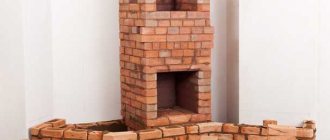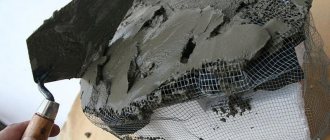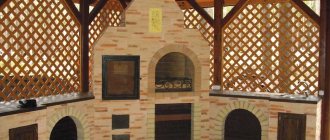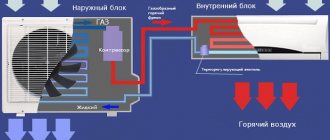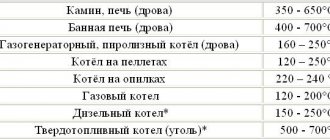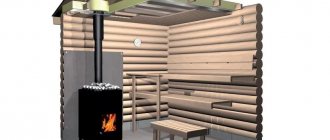In areas that are remote from large industries. centers, we often experience difficulties with building materials for our own needs during the construction of a summer house, house, garage and other farm buildings, individual, family or collective farming. Many building materials have to be manufactured on site.
Even such a material as ceramic red brick can be made on your own. Design of kilns for firing ceramic bricks Kiln masonry for firing ceramic bricks is produced taking into account the need for its partial disassembly when laying and disassembling the cage. The side walls, back wall, arch, pipe, as well as the corner parts of the front wall are laid on an ordinary clay-sand mortar. That part of the front wall that will be disassembled for cutting the cage is laid without solution.
After filling the opening with bricks, the wall is coated with clay. The walls of the furnace are made of raw brick and made one brick thick - 250 mm. It is advisable to make the ceiling on a metal frame, provided that each brick row of the vault will rest on 2 steel strips 8x40 mm, or rods 0.20-24 mm, assembled into a metal frame by welding. The arch in the middle of the oven should have a height above the laying of raw material of at least 30-35 cm.
The firebox is formed during the placement of raw materials in the oven. The width of the firebox is 48-50 cm, the height is 38-40 cm. Smoke channels with a cross-section of 25×28 cm are made in the vault, and if firing is carried out with low-calorie fuel (brown coal or peat), then there are also holes with a cross-section 25×15 cm, in If necessary, charcoal or peat is added on top. These openings must have covers. The chimney is made up to 5 m high (made of brick) with an internal cross-section of 40×40 cm or from any fire-resistant pipe 30-40 cm.

The pipe is installed next to the stove, on its back side (you can use the back wall of the stove on one side). At the middle of the height of brick laying, inspection holes (25×15 cm) are installed in the walls of the kiln, which after inspection are laid with brick and covered with clay. Laying ceramic bricks in the kiln Only well-dried bricks can be laid in the kiln raw, otherwise when firing ceramic red brick https:// www.cement-zavod.ru/kirpich/keramichesky_proizvodstvo.html a lot of fuel will be required. In addition, insufficiently dried raw material produces up to eighty percent of defects (the main reason is boiling moisture during heating of the brick, looking for a way out and forming cracks).
Laying of raw red bricks in the oven is carried out so that in the first three to four rows of laid bricks the gaps between them are (for bricks that are located directly next to the firebox) 10-15 mm, and as you move away (distance she from the firebox) increased to 25 mm. You need to remember the main thing: each brick must be accessible to flue gases flowing around it. Firing red brick in a kiln They begin to heat the kiln with straw, twigs and then firewood. The first stage is drying.
The most responsible stage. Heating should be done lightly, using low-calorie fuel - wood waste, until all the brick is free of moisture inside it. The presence of moisture in the brick is determined by the presence of condensation in the upper brick rows.
Drying can be considered complete when there is no moisture on the iron pin lowered into the oven for 2-3 minutes. The presence of moisture can also be determined by hand - place your palm over the escaping gases. The drying process usually takes up to 12 hours. The firing temperature regime is characterized by four stages: a) Drying: temperature from 20°C to 90°C; duration 10-13 hours.
b) Heating: temperature from 90°C to 600°C; duration 8-10 hours. c) Firing: temperature from 600°C to 1000°C; duration 10-12 hours d) Cooling: temperature 1000-50°C; duration 7-10 hours. Temperature control of firing in the kiln is carried out visually by the color of the arch: a) Dark red, visible in the dark, – 450-500 ° C. b) Dark red - from 600 ° C to 650 ° C .in ) Cherry red - 700 ° C. d) Light red - temperature 850 ° C. e) Yellow - 950-1000 ° C. e) White - 1200 ° C - OVERBURN! For high-quality production of red ceramic bricks M125 and M150 oven (https://www.cement-zavod.ru/) in the past they were kept closed for up to a week and only then proceeded to cooling.
This method provided excellent quality, since the removal of thermal stress occurred gradually. Almost 7-10 hours is enough. Cooling of the furnace begins by punching a small hole in the firebox - the size of a chicken egg, then after one hour the hole is doubled in size, and after another hour it is quadrupled. After 6 hours you can open the furnace open the door and wait for the oven to cool completely.
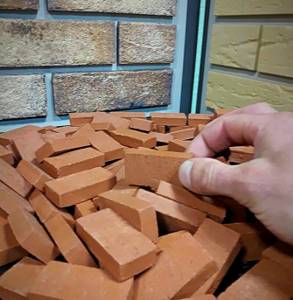
After cooling, the front wall of the furnace is dismantled and the cage is cut, starting from the top rows. After disassembly, sorting and culling, high-quality red bricks are stacked quite tightly to each other. Unfired brick can be used in non-responsible structures for partitions or in the top rows of masonry.
To make bricks you need clay.
However, it is not enough to shape it into a brick block and dry it; the brick will need to be fired. This procedure is necessary to obtain high-quality and durable building material. The availability of the necessary raw materials and knowledge of firing technology make it possible to produce building materials at home.
What is this process and features of the technology
The heat treatment of clay building materials under high temperatures is called firing. This is the final stage of brick block production. The firing technology includes 3 stages:
- Warming up. Firing. Cooling.
At the first stage, the brick is heated to a temperature of 120 degrees in order to evaporate the water from it. Then, to burn out impurities of organic origin and finally remove the liquid, it is heated to 600 degrees.
At the next stage, the brick firing temperature is 920-980 degrees. At the same time, the clay begins to shrink and strength is acquired. Under conditions of constant maximum temperature, the brick block is hardened and languishes for some time.
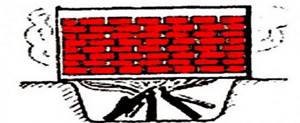
At the final stage, the resulting clay building material is cooled. If there was no violation of technology during heat treatment, the color of the block will be orange-red and the structure will be uniform. To obtain glazed brick, repeated firing will be required.
In order to ultimately obtain durable and high-quality fired bricks without cracks, the heat treatment process requires strict temperature control
Return to contents
Practical recommendations
During evaporation, the brick shrinks, which is a maximum of 15%.
Types of fired clay bricks.
If the product has stopped shrinking, this does not mean that all the moisture has evaporated from it. Therefore, during drying, it is best if the bricks are on some kind of rack with a canopy, since direct sunlight will have a detrimental effect on them. At the same time, bricks need good ventilation. The climate of the area should be taken into account: what is the humidity and temperature, how often does the wind blow and with what force? The average time for complete drying can take from one to two weeks.
Difficulties of brick firing
To organize such production you need a good business plan.
Before opening a production facility and purchasing a kiln, you need to draw up a business plan. It is necessary to take into account production volumes, the nature and cost of the energy carrier, methods of delivery of raw materials and shipment of finished products.
Costs should be kept to a minimum, otherwise the production of heat-treated brick blocks will be unprofitable. An alternative would be to produce bricks without firing. It is produced by semi-dry and dry pressing and produces a building material with properties identical to fired ones.
Return to contents
Technological process of brick production.
1. Processing the clay mass. Cleansing from various impurities. Removing air using a vacuum press.
2. Molding. Cutting into rectangles. Pressing into molds. Drying at low temperatures to remove moisture.
Technical properties of clinker.
l High mechanical strength - up to 25 MPa;
l Minimum water absorption - up to 6%;
l High frost resistance, from 200 cycles;
l Highly resistant to various aggressive substances;
l Low thermal conductivity;
l A variety of colors from pale to dark brown shades;
l Increased level of durability, exceeding 100 years.
Clinker is produced using different technologies - extrusion or semi-dry pressing technology. The production of clinker bricks requires high temperatures during the firing stage, which differs from the production of other types of bricks.
Tunnel oven
The tunnel oven has three compartments.
A tunnel type device is a long, tunnel-shaped gas brick kiln. Inside there are 3 chambers and rails. Metal trolleys move along them with the help of automatic pushers.
Unfired bricks are loaded before entering the kiln. The entrance and exit are sealed hermetically. After drying in chamber 1, the brick blocks are moved to chamber 2 for firing.
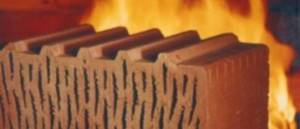
It is provided by gas burners that constantly maintain the temperature at 920-980 degrees. The brick then enters a third zone with a lower temperature, where it is cooled. After the mode is completed, the pushers roll out the trolleys from the furnace and the brick blocks cool completely outside of the furnace.
Return to contents
Ring furnace
Devices of this type consist of many sections located next to each other in the form of a ring.
Each of them has a window for loading and removing material, as well as its own heating source. The ring furnace ensures continuity of the firing process. Thus, a batch of brick blocks goes through all stages of heat treatment while being in the same compartment. The adjacent chamber contributes to heating, the blocks are calcined due to their fuel, and cooling is provided by the temperature of the next section.
Return to contents
Can it be done at home?
At home, you can make adobe yourself without resorting to firing it.
At home, it is possible not only to burn bricks, but also to make homemade building materials.
However, with this process the number of brick blocks with defects will be greater. Excessively hardened materials will not be suitable for reuse. There are 3 types of materials:
- adobe - without firing with the addition of straw; raw brick; fired.
To obtain homemade bricks, you need a paving shape. You can also do it yourself.
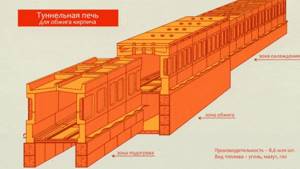
For this you will need plywood and boards 25 mm thick. Form elements are cut out of these materials and connected with nails 5-6 mm long so that the size of the future brick block corresponds to the standard one, namely 250 × 120 × 65. Homemade unbaked bricks are made from a mixture of lean and fatty clay with the addition of straw in a ratio of 1:1:5, diluted with water to a uniform consistency.
The finished solution is placed tightly into molds that have been pre-moistened and sprinkled with cement and covered with a removable lid. After drying for 7-14 days, the finished product is removed. To get raw brick, do the same procedure, adding sand instead of straw.
In industrial production, special kilns are used for firing clay.
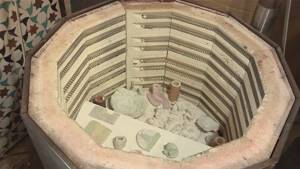
At home, a homemade stove in the form of a metal barrel with a volume of about 200 liters with a cut out bottom is suitable. The firing blocks are placed in it, covered with a metal lid and placed on the oven with an open top. If there is none, it is mounted on legs 20 cm high above the pit, in which a fire is lit at a depth of 0.5 m.
To ensure the required temperature for firing, the fire must be maintained continuously for 20 hours. At the final stage of the process, it is made weaker. After 6 hours, remove the lid and allow the brick to cool.
How to burn bricks? This question is very popular, because brick is a building material that has been known for several thousand years.

The popularity of brick is explained by its unique properties and simple production. In regions with high air temperatures, bricks can be made at home. But for this you need to know the technology of how to burn a brick, and choose high-quality materials.
Firing the brick in a kiln secures the shape and durability of the brick.
Cage (laying)
Only well-dried raw materials can be placed in the kiln, otherwise a lot of fuel will be required during firing.
In addition, insufficiently dried raw materials produce up to 80% of rejects. The main reason for the defect is that excess moisture, turning into steam, seeks a way out and leads to cracking of the brick.
The laying of raw bricks in the furnace (see Fig. 7 ) is carried out so that in the first 3-4 rows of laid bricks the gaps between them are (for bricks located directly near the firebox) 10-15 mm, and as they move away (further from the firebox) increased to 25 mm.
The rows can be laid in any way, for example, “lattice” or “herringbone”. Methods can be alternated.
The main thing to remember is that each brick must be accessible to flue gases flowing around it.
The distance between the cage bricks and the furnace walls should be within 20-25 mm.
What are they made from?
To make bricks at home you will need clay, which is located just below the turf. A sign of the presence of clay is a sticky reddish mud obtained by mixing water and earth. The ideal option for production is clay of medium fat content.
To determine the fat content of raw materials, the following experiment is carried out. 500 g of clay is extracted from several sections of the soil, then water is added to it.
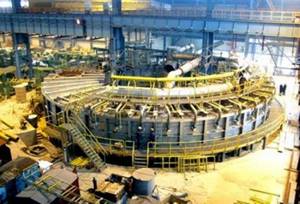
Mix the clay with water until it becomes gluten-free. Small balls with a circumference of about 5 cm are made from the resulting mixture. This operation is performed with all types of extracted clay.
After 2-3 days, when the balls have dried and hardened, look at the result. If the balls are cracked, this indicates a high fat content of the clay, and quartz sand will need to be added to it. If there are no cracks on the balls and when thrown from 1 m the ball remains intact, then this means that the clay has optimal fat content and is completely suitable for brick production.
Manufacturing methods
Adobe is an unfired (raw) form of brick.
Today there are 3 methods of brick production known:

- adobe - unfired brick made with the addition of straw; raw brick; burnt red brick.
The adobe production technology is as follows. First, you need to make special molds for filling measuring 25x12x6.5 cm. The material for the molds is 20.5 mm thick boards and 2 small pieces of plywood, which are connected to each other with nails 5-6 cm long.
To form recesses in the brick, small projections are made in the two lids of the mold. This promotes better adhesion of materials. The top cover is made removable.
Next they move on to making the solution.
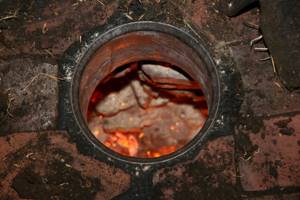
Lean, fatty clay and thoroughly ground straw are placed in a large container with low sides in a ratio of 1:1:5. Adding a little water, mix the resulting mixture with a shovel, and then pour it into previously made molds slightly moistened with water. The form is filled out completely, including all corners.
Excess solution is removed with a metal spatula. Sprinkle a little cement or dust on top and cover with a lid. After some time, the molds are turned over, having first removed the top cover.
Shelving under a canopy is used for drying bricks. Typically, drying takes 7-14 days, depending on climate conditions. During drying, avoid direct exposure to sunlight and ensure good ventilation.
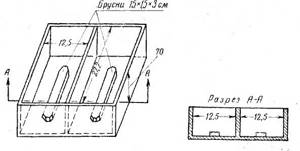
Raw brick is made from clay without straw in an unfired manner.
Adobe is a fairly durable type of brick, and buildings made from it have been preserved for decades.
Raw brick is produced similarly to adobe, only sand is added instead of straw. At the same time, the proportions of materials remain the same.
Raw clay brick
The most important stage in the production of raw meat is drying. The shrinkage of the brick will be at least 12-15%, and cracks are possible, and such a brick will not be durable and is only suitable for garden paths and possibly for septic tanks (the second row of masonry). Drying technology is based on providing the raw material with conditions: shade or partial shade, absence of direct sun and wind, protection from atmospheric moisture (including dew). It would seem that such conditions are easy to create, but in practice it often turns out that an ordinary canopy is not enough - a closed room is required, but at the same time well ventilated. It will also not be possible to properly dry raw bricks under trees in the garden or under the wall of a house, since the drying time is long - from 6-7 days to two or more weeks, and throughout this period it is necessary to provide the bricks with optimal conditions in terms of temperature and air humidity, and the only a downpour will be fatal for the molded raw materials. Heat and sun do not speed up the drying of clay, but only lead to cracking of the outer layers and deterioration of the material.

Sequence of work:
- Wooden block molds or single molds are moistened from the inside and sprinkled with cement powder;
- Lay out the clay batch into the molds in a “slide” and compact (shake, ensuring that the mixture fills the mold completely), excess clay is removed from above flush with the sides with a spatula or wooden slats; Cover the molds with lids and leave to dry at normal temperature, in a shaded place.
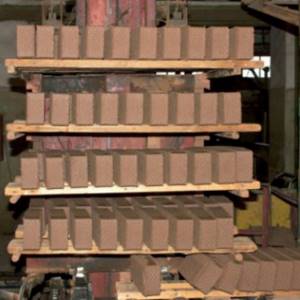
After the bricks have dried (after 1-3 days), continue drying with the mold lids removed for another 24 hours or more. Next, turn the block molds over, carefully shake out the raw material and leave it to dry completely. Drying time depends on weather conditions, air humidity, quality and type of clay and filler.

Making baked bricks
The production of fired raw bricks includes 3 stages:
Scheme of firing bricks with gas.
- heating; firing; cooling.
Brick firing is the most important and responsible process in production; it involves gradual heating of the product to a temperature of 920 to 980°C.
At high enough temperatures, clay changes its state, color and turns into a super-strong material. Fired clay cannot be soaked with water, and it becomes stone-like forever. And besides, she is not afraid of frost.
There are two firing methods. In the first method, raw brick is placed in a metal barrel with a volume of 200-250 liters without a bottom.
Then the barrel is placed on the stove without a top. In the second method, the barrel is placed on legs about 20 cm high in a pre-dug hole about 50 cm deep. To ensure a uniform temperature, the fire should burn for about 20 hours.
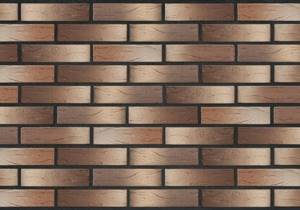
Brick firing consists of several stages:
Stage 1 - low heat or evaporation, during which water evaporates at a temperature of about 120°C. Stage 2 - medium fire or smoke, takes place at a temperature of 120-600°C.
Organic impurities burn out, and chemically bound water is completely released. Stage 3 is a large fire or brew, in which the firing process itself begins at a temperature of 920 to 980 ° C and shrinkage occurs. At this stage, the clay gains strength. Stage 4 - hardening or languishing. The brick is in the oven at a certain temperature, without sudden changes. Stage 5 is the final stage, cooling.

When firing in a barrel, it should not be opened until the brick has completely cooled naturally or until the temperature has been gradually reduced manually. Usually the lid is removed after 6 hours. If this condition is not met, there is a high probability of cracks forming in the clay.
To determine the quality of baked brick, it is broken into 2 parts. A properly manufactured product has a rectangular shape, a uniform structure inside and an orange-red color. If you fill a brick with water for several hours, it should not get wet.
Red burnt brick needs to be soaked before laying.
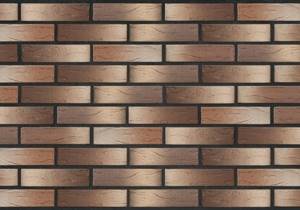
- Date: 03/31/2015 Comments: Rating: 20
Why is brick firing necessary? One of the most ancient crafts is construction. Since ancient times, people have built homes for themselves.
Initially, branches and leaves were used for this, then clay was used. With the development of mankind, building materials have changed. Brick is very popular today.
Materials and tools for making bricks: 1 - pestle (pustle); 2 - flooring; 3 - sand with a scoop; 4 - clay with a shovel; 5 - created; 6 - bracket or scraper.
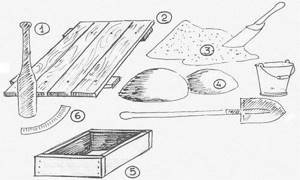
Such material is relevant for residents of rural areas, and they produce it themselves. The simplest technology for its production requires clay and additional components.
The resulting forms dry, and then the brick firing process follows. It’s worth saying right away that this work requires control over temperatures during the final firing. Otherwise, clay will not create high-quality material.
Plastic molding
Plastic formation of brick photo
This method involves preparing a mass containing approximately 20 percent moisture. Usually they take clay and loams, which contain calcium carbides, aluminum oxides, and magnesium. Additives are also added to them in the form of waste from coal preparation and coal mining (for example, ash and slag).
Clay is removed from the quarry, placed in concrete pits, leveled and moistened layer by layer. The clay is “rested” for several days (up to 4 days). Next, it is delivered to the factory to undergo processing, which consists of removing pebbles from the mixture using special stone-extraction rollers. Everything is crushed, stone inclusions are removed. In the mixer, the mass is moistened (from 18 to 25 percent).
The purified mixture enters the box feeder. At the exit from it, the mass is met by moving rakes, breaking up large pieces and directing the clay to the runners. This is where the homogeneous mixture is thoroughly mixed, which passes through flexible rollers and enters a belt press connected to a cutting apparatus. Belt presses contain vacuum chambers in which air is removed from the clay mass. This promotes its plasticity and reduces molding moisture. The time for drying the raw material is also reduced and at the same time its strength increases.
Features of the technological process affect the strength of products. It is possible to obtain not only ordinary bricks, but also heavy-duty ones (that is, clinker).
Then the clay “sausage” is cut into pieces of equal size and placed on wooden frames. This is how packaging into frames occurs. Raw bricks still contain quite a lot of moisture, so you need to wait until they dry. The water gradually evaporates, due to this shrinkage occurs and the volume of the product decreases.
To prevent the future brick from cracking, the increase and mode of increasing temperature of both drying and firing should be regulated.
drying bricks photo
Drying of bricks is often done artificially: with the heat of exhaust steam. The temperature gradually rises, immobilized water vapor is formed in the drying chamber, which has a beneficial effect on drying, since heating the brick product in moist air ensures that the entire mass dries evenly. Finally, firing takes place in a ring or tunnel kiln, which continues until the sintering process begins (at a temperature of 1,000°C).
Firing completes the process of making brick products using plastic molding. When sent to the oven, the raw material still has about 8…12 percent moisture content. At the very beginning of placing it in the oven, it is completely dried. When the temperature rises to 550°C–800°C, dehydration of clay materials begins, during which the crystal lattice of minerals disintegrates, as a result of which plasticity is lost, and the product undergoes another shrinkage. Video of the brick production process:
What happens to the brick at this time?
— First, volatile organic impurities and additives are released (at a temperature of 200°C–800°C), the rate of increase in firing temperature per hour reaches 300°C–350°C at this time. The temperature level is maintained until the carbon burns out. If the temperature rises above 800°C, changes occur in the structure of the product.
